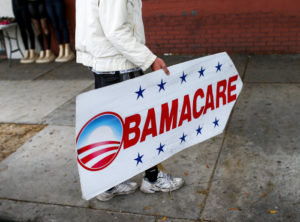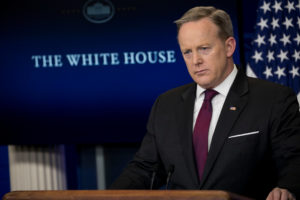Mes: febrero 2017
Fondos en AFP perdieron unos S/800 millones por Graña y Montero
Desde noviembre del año pasado la acción de Graña y Montero ha perdido un 70% de su valor, lo que impacta en los fondos AFP
A raíz del escándalo ocasionado por la empresa Odebrecht, el ex representante de la brasileña, Jorge Barata, indicara a la Fiscalía peruana que sus socios en la Carretera Interocénica Sur (IRSA Sur) -Graña y Montero (G&M), JJC Contratistas Generales e ICCGSA- tenían conocimiento de las coimas entregadas al ex presidente Alejandro Toledo, lo cual ha afectado a Graña, única de las tres que cotiza en bolsa.
En este contexto, preocupa la cantidad de inversión comprometida que mantienen las AFP en las empresas mencionadas. Giovanna Prialé, presidenta de la Asociación de los fondos de pensiones, respondió así a El Comercio:
¿Qué tan expuesta están las AFP por G&M, JJC e ICCGSA?
Con información a agosto del 2016, las AFP invirtieron en G&M el 0,97% del total del fondo administrado, donde el 0,34% es por acciones comunes y el 0,63% por ADR. Es importante señalar que esta participación cae a 0,5% en enero 2017. Por otro lado, en las empresas JJC e ICCGSA las AFP no tienen nada invertido.
¿Afectará esta situación a los afiliados que estén por jubilarse este año?
Aquellos afiliados que están próximos a jubilarse están en el Fondo 0 o en el Fondo 1. Los del primer grupo no corren riesgo dado que en ese fondo no hay inversiones en G&M. Estos son afiliados que ya están en el proceso para jubilarse.
En el segundo grupo, están los afiliados mayores a 60 años, cuyo riesgo asociado a G&M es mínimo, dado que, con información a enero 2017, lo invertido en acciones de la empresa representa el 0,2% de lo que se maneja en el Fondo 1 y el 0,03% del total del fondo administrado.
HAGA NÚMEROS
En base a lo dicho por la presidenta de las AFP, si una persona está a punto de jubilarse y tiene su fondo de pensiones en el Fondo 0, no se verá afectada.
Si se está a punto de jubilarse y está en el Fondo 1, el efecto es de 0,2%. Esto significa que si se tenía 100.000 soles en la AFP, el monto invertido en Graña y Montero es de 200 soles, de los cuales se ha perdido el 70% desde noviembre, es decir, 140 soles.
Para el resto de personas, en promedio, la inversión en la acción de la constructora fue de 0,97% a agosto, es decir, que por cada 100.000 soles acumulados en la AFP, estuvieron invertidos en Graña y Montero 970 soles, de los cuales el 70% se perdió: 679 soles.
Hay que tener en cuenta que desde enero, la inversión en Graña y Montero se redujo a 0,5% del fondo, por lo que desde entonces, la exposición al fondo es de 500 soles, en promedio, para cada afiliado. Desde fines de enero hasta el lunes 27 de febrero, la acción ha perdido en 45% de su valor, por lo que los afiliados perdieron 225 soles.
PÉRDIDA ACUMULADA
Las pérdidas mencionadas antes son a nivel individual y un promedio, pero también puede estimarse cómo disminuyó el fondo hasta el lunes último impactado por Graña y Montero.
En total, a fines de noviembre (cuando empezó la debacle de la acción), las AFP administraban 15 mil 968 millones soles en el Fondo 1, por lo que el dinero expuesto a Graña y Montero fue 31 millones 893 mil soles, de los cuales se perdió el 70% o 22 millones 355 mil soles.
En el caso del Fondo 2 son 96 mil 897 millones los soles invertidos, por lo que el dinero expuesto (0,97%) a Graña y Montero fue 939 millones 904 mil soles, perdiéndose 657 millones 933 mil soles.
En el caso del Fondo 3 son 21 mil 586 millones 855 mil soles los invertidos, de los cuales 209 millones 392 mil soles estuvieron expuestos a Graña y Montero, perdiéndose 146 millones 574 mil soles.
No se conoce el monto invertido en Graña de los fondos 2 y 3, por lo que en ambos casos se aplicó el 0,97% que señaló la presidenta de la Asociación de AFP. De esa forma, haciendo la aclaración que es a grandes números, se perdieron unos 826 millones de soles de los fondos de pensiones debido a la caída desde noviembre de la acción de Graña y Montero.
El cálculo tampoco toma en cuenta las compras y ventas de la acción que pudieran haber hecho las AFP, por lo que solo puede tomarse como un valor referencial.
REBOTE
Cabe indicar que la acción de Graña y Montero ha caído tanto que muchos inversionistas se animan a comprarla, a pesar del riesgo que existe de que en el futuro siga cayendo. Esta mañana, las acciones de la constructora están subiendo 14%.
En: elcomercio
Modelo enfureció en vivo, con los tocamientos de un “especialista” en aplicar filtro solar
El “especialista” pidió la presencia de una modelo porque según él, debía explicar a todos cómo untar una crema bronceadora para el cuerpo. El idiota decidió que tenía que continuar esparciéndolo por la parte de atrás. Y pidió a la voluptuosa modelo que se volteara. Ella no aguantó más los tocamientos y tuvo que marcharse enfurecida del set de televisión.
Golpe de Estado 5 de Abril de 1992 – Completo Univision
Nelson Pinedo – Me Voy Pa’ la Habana (La Sonora Matancera)
White House Bars Times and Other News Outlets From Briefing
WASHINGTON — Journalists from The New York Times and several other news organizations were prohibited from attending a briefing by President Trump’s press secretary on Friday, a highly unusual breach of relations between the White House and its press corps.
Reporters from The Times, BuzzFeed News, CNN, The Los Angeles Times and Politico were not allowed to enter the West Wing office of the press secretary, Sean M. Spicer, for the scheduled briefing. Aides to Mr. Spicer only allowed in reporters from a handpicked group of news organizations that, the White House said, had been previously confirmed.
Those organizations included Breitbart News, the One America News Network and The Washington Times, all with conservative leanings. Journalists from ABC, CBS, The Wall Street Journal, Bloomberg, and Fox News also attended.
Reporters from Time magazine and The Associated Press, who were set to be allowed in, chose not to attend the briefing in protest of the White House’s actions.
“Nothing like this has ever happened at the White House in our long history of covering multiple administrations of different parties,” Dean Baquet, the executive editor of The Times, said in a statement. “We strongly protest the exclusion of The New York Times and the other news organizations. Free media access to a transparent government is obviously of crucial national interest.”
The White House Correspondents’ Association, which represents the press corps, quickly rebuked the White House’s actions.
“The W.H.C.A. board is protesting strongly against how today’s gaggle is being handled by the White House,” the association president, Jeff Mason, said in a statement. “We encourage the organizations that were allowed in to share the material with others in the press corps who were not. The board will be discussing this further with White House staff.”
The White House move came hours after Mr. Trump delivered a slashing attack on the news media in a speech at the Conservative Political Action Conference. The president denounced news organizations as “dishonest” purveyors of “fake news” and mocked journalists for claiming free speech rights.
“They always bring up the First Amendment,” Mr. Trump said to cheers.
A White House spokeswoman, Sarah Huckabee Sanders, played down the events in an email on Friday afternoon.
“We invited the pool so everyone was represented,” Ms. Sanders wrote. “We decided to add a couple of additional people beyond the pool. Nothing more than that.”
Mr. Spicer’s small-group Friday session, known as a gaggle, was scheduled as a no-camera event, less formal than his usual briefings that are carried live on cable news. But past administrations have not hand-selected outlets that can attend such sessions.
“It was clear that they let in a lot of news outlets with less reach who are Trump-friendly,” said Noah Bierman, a White House reporter for The Los Angeles Times, who was barred. “They let in almost every network but CNN. That’s concerning, the handpicking aspect of it.”
Two of the barred outlets, CNN and The Times, have been a particular focus of Mr. Trump’s ire. And during the presidential campaign, some journalists from BuzzFeed News and Politico were prohibited from attending Trump rallies.
Representatives of the barred news organizations made clear that they believed the White House’s actions on Friday were punitive.
“Apparently this is how they retaliate when you report facts they don’t like,” CNN said in a statement.
Ben Smith, editor in chief of BuzzFeed, called it “the White House’s apparent attempt to punish news outlets whose coverage it does not like.”
In: nytimes
What’s Next For The Affordable Care Act? Your Questions Answered

The one thing that’s certain is that there will be changes in the Affordable Care Act.
Joe Raedle/Getty Images
No matter where you stand on the political spectrum, health care under the Affordable Care Act is going to change in the next few years. The Republican-led Congress has vowed to “repeal and replace” the health law known as Obamacare.
That has left many people anxious and confused about what will happen and when. So NPR’s Morning Edition asked listeners to post questions on Twitter and Facebook, and we will be answering some of them here and on the radio in the weeks ahead.
Many of the questions so far have to do with timing.
For example, Steva Stowell-Hardcastle of Lewisburg, Penn., says: “I’m confused about what parts of the ACA have been repealed and when those changes take place.”
First, despite social media headlines, nothing substantive has been changed in 2017. That’s because making these changes is harder than it looks.
In January, Republicans in Congress passed a budget resolution that called for major changes to the law to be made in a subsequent bill.
Even though that process would allow them to pass a bill without Democratic votes, they haven’t been able to agree on what those reforms should look like.
And there are several other obstacles.
First of all, they won’t be able to repeal everything in one go, which counters a lot of the rhetoric coming out of the election. And they would be limited in what parts of the law they can replace.
That said, the Trump Administration has taken some action, but no concrete changes – yet. In January, Trump signed an executive order calling for federal agencies to “waive, defer, grant exemptions from, or delay the implementation of any provision or requirement of the act” that would “impose a fiscal burden” on states, individuals, healthcare providers, and others in the health industry.
While that could be widely interpreted, so far the only federal action in response to that order has come from the IRS. The IRS says it will not strictly enforce the “individual mandate” that requires most Americans to have health insurance. The agency noted, however, the requirement is still law.
A related question comes from Kathryn Henry of Iowa City, Iowa. She asks “if it is repealed, what happens to people like me who currently have insurance through it and when?”
Both President Trump and GOP congressional leaders have insisted that they want a smooth transition from the current system to a new one, particularly for the 11 million or so people who purchased coverage on the federal or state health insurance exchanges since the law took effect.
“We don’t want to pull the rug out from under people while we’re replacing this law,” said House Speaker Paul Ryan, R-Wisc., in January. Trump has insisted that repealing the law and replacing it be done “essentially simultaneously,” so as not to leave people without insurance.
Unless something unexpected happens, people who purchased insurance for 2017 should be covered through the remainder of the year.
The bigger question is what happens in 2018. The uncertainty alone is prompting some insurers to pull out of the individual insurance market — the market in which people don’t get insurance through their employer. The individual market is the most affected by the health law.
For example, the insurance company Humana has already said it won’t participate in the health insurance exchanges next year, and the CEO of Aetna told reporters that his company might drop out, too. If Congress deadlocks over how to overhaul the health law, more insurance companies could follow suit.
Insurers were supposed to tell the federal government if they planned to participate in the insurance exchanges by May 3, but the Trump Administration has now given them until the end of June.
Got more questions about what’s happening to the ACA? I’ll be back next week with answers. Just tweet @MorningEdition using the hashtag #ACAchat.
Kaiser Health News (KHN) is a national health policy news service. It is an editorially independent program of the Henry J. Kaiser Family Foundation.
In: npr
Ed Sheeran – Shape Of You
Subsidio por maternidad

Imagen: http://m1.paperblog.com/i/375/3750244/embarazo-trabajo-proteccion-laboral-maternida-L-2wKaDX.jpeg
En relación al pago de las prestaciones económicas por maternidad (Decreto Supremo N° 002-2016-TR), SERVIR comunica a los jefes y responsables o al que haga sus veces de las Oficinas de Recursos Humanos en el Estado lo siguiente:
- El artículo 2º del Decreto Supremo modifica el primer párrafo del artículo 16º del Reglamento de la Ley Nº 26790, Ley de Modernización de la Seguridad Social en Salud, aprobado por Decreto Supremo Nº 009-97-SA, disponiendo que las prestaciones económicas (subsidios) por maternidad se otorguen por noventa y ocho (98) días, los cuales pueden distribuirse en los períodos inmediatamente anteriores o posteriores al parto, conforme lo elija la madre, con la condición de que durante esos períodos no realice trabajo remunerado.
- El Seguro Social de Salud del Perú (ESSALUD), a través de la Carta Circular Nº 015-GCSPE-ESSALUD-2016, ha señalado que las condiciones para el otorgamiento de las prestaciones económicas (subsidios) por maternidad, en lo que refiere a los 8 días adicionales, son las siguientes:
a. El alumbramiento se haya producido a partir del 10 de marzo del presente año inclusive; o
b. La fecha probable de parto sea a partir del 10 de marzo del presente año (y el alumbramiento no se haya producido).
- En ese orden, la carta circular estipula que los Certificados de Incapacidad Temporal por Maternidad se emiten por noventa y ocho (98) días. Asimismo, a los certificados emitidos por noventa (90) días, con anterioridad a la vigencia del Decreto Supremo Nº 002-2016-TR, y que cumplan con las condiciones antes indicadas, se les adicionará un Certificado por ocho (08) días en el periodo de post-parto.
Lima, 31 de marzo de 2016
Gerencia de Desarrollo del Sistema de Recursos Humanos
En: servir.gob.pe


